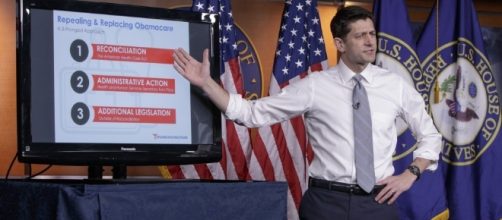Speaker of the House Paul Ryan literally rolled up his sleeves, pushed the play button on his technology, and spent nearly 40 minutes addressing the ins-and-outs of the Republican proposed American Health Care Act. The American public now has options. It can a) read the 123 page document pouring over every page detail by detail, b) contact their congressional members for extended conversations about the new plan, or c) watch and listen to Speaker Ryan give a bells and whistles driven play by play with slides, graphs, data, pie charts and more.
What did he say?
The Republicans are offering a three-pronged approach which includes reconciliation, administrative action, and additional new legislation. This multilevel approach has four intended outcomes: lower costs, more choices, more patient control, and universal access. Ryan provided a broad stroke background overview regarding the approach. And he provided vignette-type information about the outcomes. Among the details, he stated that Congress would repeal taxes associated with Obamacare, curtail spending, and eliminate mandates to make the repeal and replacement happen.
What America hears
Throughout the PowerPoint presentation, Ryan touched on pre-existing conditions. He provided a Republican view on state-controlled Medicaid.
He reiterated the previous shot heard around the world mantra that no one will lose their current insurance. He stressed that the new health care plan will continue to allow young people to remain on their parents policies. And he talked about potential tax credits for needy populations. The beauty of Ryan's presentation is that it can be viewed over and over, again and again - a high tech way to deliver challenging information.
In general, the American public heard the many ways that the Republicans believe they will eliminate the problems of the past bill and create better options in health care for the future. Is this the same story, different Congress, better story / worse story, different Congress, or a defining moment in time? Four years from now, the American people can be the judge.

